Found in an archaeological dig in Bethsaida, this rare bronze coin tells of love, trade ties and globe-shaking jealousies. And what if Marc Antony had won the war?
Great rulers come but a rare few leave a mark echoing down the millennia. Two such were Cleopatra and Marc Antony, who fleetingly placed Egypt at the center of the ancient world, only to unleash unrest and eventually war on the region.
A few thousand years is a mere blink of an eye when it comes to the vital ties between this land and Egypt, as attested by a rare coin carrying historical weight far greater than its 7.59 grams, which depicts the notorious lovers – and which emerged last year from the ruins of a first-century house at Tel Bethsaida on the Sea of Galilee.
Tel Bethsaida rises from the northern coast of the Sea of Galilee, but the coin was minted in another city by another sea – the Mediterranean port of Akko - today better known as Acre. The coin, made of bronze, is about the size of a quarter, being 21–23 millimeters in diameter (it is not perfectly round, at least not any more). Its date shows that it was minted in the last half of the year 35 or the first half of 34 BCE.
Mark Antony, the most powerful man in the world at the time, is on one side of the coin and Cleopatra graces the other. On her side are the Greek words “of the people of Ptolemais.”
Ptolemais is the Greek name for ancient Akko, which was founded in the 3rd century BCE and named after Ptolemy II Philadelphus. The name appears in the New Testament (Acts 21:7) as the home of an early Christian community that Paul the apostle visited: "And when we had finished our course from Tyre, we came to Ptolemais, and saluted the brethren, and abode with them one day."
The coin was minted some two and a half centuries after the city was founded, a time when both Mark Antony and his bitter rival Octavian were in their prime and no one knew who would prevail, Arav says.
Why depict them? The cities of the ancient Middle East had a habit of minting coins bearing the portraits of whoever was in power, says Dr. Donald T. Ariel, head of the Israel Antiquities Authority Coin Department.
And Marc Antony was most definitely powerful in the year stamped on the coin. Prof. Rami Arav, director of the Bethsaida Excavations Project, suggests that the minting of the coin may have had to do with Marc Antony's victory over the Parthians, rulers of a land in what is now northeastern Iran and Armenia, in 35 BCE. He then granted Armenia to Cleopatra’s sons and gave Cyprus to her daughter Selene.
Cleopatra also appears on coins from the same period, found in cities further north up the Lebanese coast, that were among gifts Marc Antony gave his consort.
That same year Marc Antony, still deeply involved with Cleopatra, moved the capital of the empire from Rome to Alexandria, Egypt.
The west could have been worshipping cats
Had Antony not lost the battle of Actium in 31 BCE, there might have been a dramatic change in the history of the Western civilization, Arav says.
“We can only imagine what could have happened to Western civilization if the capital of the empire was not Rome, but Alexandria," Arav says. "Until Augustus turned it ‘from a mudbrick city to marble’ Rome was a very unimpressive town. It could have remained an unimportant city on an insignificant peninsula of Italy, way in the west, where according to the Greeks, demons and giants lived.”
When pressed to imagine what could indeed have happened, Arav, says: “I am not sure that we would be worshipping cats today or building pyramids, but Greek could have been much more important than it was and perhaps the rise of Europe in the 15th century would not have happened. Who knows?”
But Antony did lose that battle, and 11 months later, he took his own life, dying in Cleopatra's arms in an immortal star-crossed lovers’ moment.
Other coins from Akko have been found in Bethsaida, showing the trade connections between the port city, an international commercial hub at the time, and Bethsaida, a regional one, Arav points out.
The "lovers' coin" recalls Bethsaida around the turn of the first millennium, when its main claim to fame was being the New Testament home of the apostles Peter, James and John.
Bethsaida was where Jesus is believed to have healed a blind man (Mark 8:22-25) and fed the 5,000 (Luke 9:5-17). But much of the efforts of Arav’s team involve uncovering remains that go back a thousand years before that – to a time the city was the capital of the ancient, strategic kingdom of Geshur, the homeland of one of the wives of David’s youth, Maacah.
Coins with the portraits of Antony and Cleopatra are extremely rare. Only six have been found anywhere in the world, says Ariel. But to him the coin recalls Cleopatra’s connection with a man who doesn't even appear on it - the man who, after Jesus, is perhaps the best-known figure of this land: Herod the Great.
Cleopatra managed to persuade Marc Antony to wrest Herod’s priceless balsam plantations from him and hand them over to her. As a client king of Rome, there wasn’t much Herod could do about that (in fact, it is said Herod rented the plantations back from her and still turned a profit).
However, Ariel notes, Herod, who was no stranger to romantic imbroglios, was able to resist the queen’s wiles - unlike Julius Caesar and Marc Antony - and hold on to the rest of his kingdom.
In fact, Herod confessed to Augustus, the victor of the battle of Actium, that he had always counseled Marc Antony to kill Cleopatra, to put an end to the long civil war that tortured Rome after the assassination of Julius Caesar.
A few thousand years is a mere blink of an eye when it comes to the vital ties between this land and Egypt, as attested by a rare coin carrying historical weight far greater than its 7.59 grams, which depicts the notorious lovers – and which emerged last year from the ruins of a first-century house at Tel Bethsaida on the Sea of Galilee.
Tel Bethsaida rises from the northern coast of the Sea of Galilee, but the coin was minted in another city by another sea – the Mediterranean port of Akko - today better known as Acre. The coin, made of bronze, is about the size of a quarter, being 21–23 millimeters in diameter (it is not perfectly round, at least not any more). Its date shows that it was minted in the last half of the year 35 or the first half of 34 BCE.
Mark Antony, the most powerful man in the world at the time, is on one side of the coin and Cleopatra graces the other. On her side are the Greek words “of the people of Ptolemais.”
Ptolemais is the Greek name for ancient Akko, which was founded in the 3rd century BCE and named after Ptolemy II Philadelphus. The name appears in the New Testament (Acts 21:7) as the home of an early Christian community that Paul the apostle visited: "And when we had finished our course from Tyre, we came to Ptolemais, and saluted the brethren, and abode with them one day."
The coin was minted some two and a half centuries after the city was founded, a time when both Mark Antony and his bitter rival Octavian were in their prime and no one knew who would prevail, Arav says.
Why depict them? The cities of the ancient Middle East had a habit of minting coins bearing the portraits of whoever was in power, says Dr. Donald T. Ariel, head of the Israel Antiquities Authority Coin Department.
And Marc Antony was most definitely powerful in the year stamped on the coin. Prof. Rami Arav, director of the Bethsaida Excavations Project, suggests that the minting of the coin may have had to do with Marc Antony's victory over the Parthians, rulers of a land in what is now northeastern Iran and Armenia, in 35 BCE. He then granted Armenia to Cleopatra’s sons and gave Cyprus to her daughter Selene.
Cleopatra also appears on coins from the same period, found in cities further north up the Lebanese coast, that were among gifts Marc Antony gave his consort.
That same year Marc Antony, still deeply involved with Cleopatra, moved the capital of the empire from Rome to Alexandria, Egypt.
The west could have been worshipping cats
Had Antony not lost the battle of Actium in 31 BCE, there might have been a dramatic change in the history of the Western civilization, Arav says.
“We can only imagine what could have happened to Western civilization if the capital of the empire was not Rome, but Alexandria," Arav says. "Until Augustus turned it ‘from a mudbrick city to marble’ Rome was a very unimpressive town. It could have remained an unimportant city on an insignificant peninsula of Italy, way in the west, where according to the Greeks, demons and giants lived.”
When pressed to imagine what could indeed have happened, Arav, says: “I am not sure that we would be worshipping cats today or building pyramids, but Greek could have been much more important than it was and perhaps the rise of Europe in the 15th century would not have happened. Who knows?”
But Antony did lose that battle, and 11 months later, he took his own life, dying in Cleopatra's arms in an immortal star-crossed lovers’ moment.
Other coins from Akko have been found in Bethsaida, showing the trade connections between the port city, an international commercial hub at the time, and Bethsaida, a regional one, Arav points out.
The "lovers' coin" recalls Bethsaida around the turn of the first millennium, when its main claim to fame was being the New Testament home of the apostles Peter, James and John.
Bethsaida was where Jesus is believed to have healed a blind man (Mark 8:22-25) and fed the 5,000 (Luke 9:5-17). But much of the efforts of Arav’s team involve uncovering remains that go back a thousand years before that – to a time the city was the capital of the ancient, strategic kingdom of Geshur, the homeland of one of the wives of David’s youth, Maacah.
Coins with the portraits of Antony and Cleopatra are extremely rare. Only six have been found anywhere in the world, says Ariel. But to him the coin recalls Cleopatra’s connection with a man who doesn't even appear on it - the man who, after Jesus, is perhaps the best-known figure of this land: Herod the Great.
Cleopatra managed to persuade Marc Antony to wrest Herod’s priceless balsam plantations from him and hand them over to her. As a client king of Rome, there wasn’t much Herod could do about that (in fact, it is said Herod rented the plantations back from her and still turned a profit).
However, Ariel notes, Herod, who was no stranger to romantic imbroglios, was able to resist the queen’s wiles - unlike Julius Caesar and Marc Antony - and hold on to the rest of his kingdom.
In fact, Herod confessed to Augustus, the victor of the battle of Actium, that he had always counseled Marc Antony to kill Cleopatra, to put an end to the long civil war that tortured Rome after the assassination of Julius Caesar.
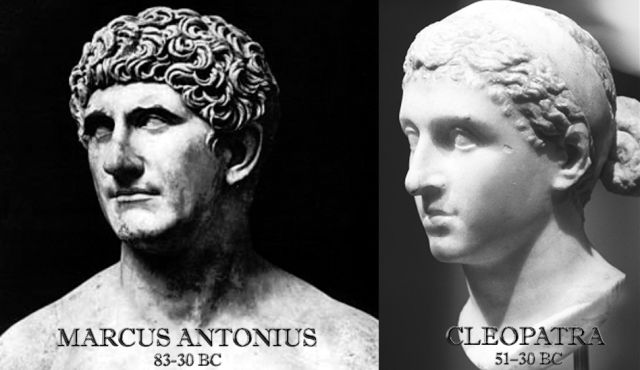
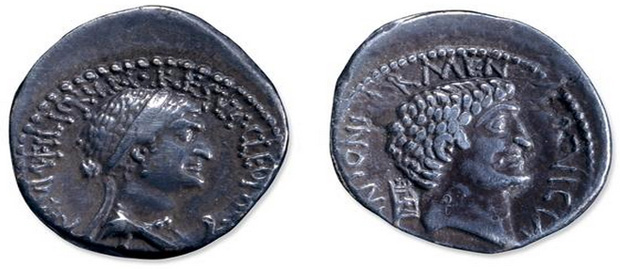
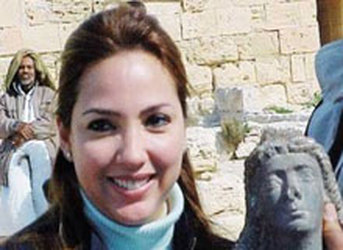
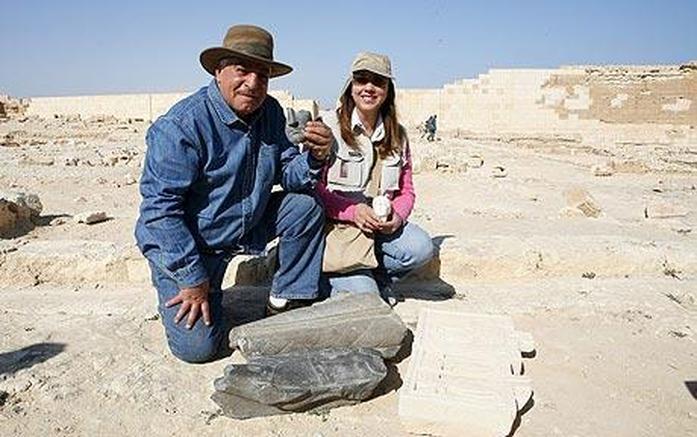
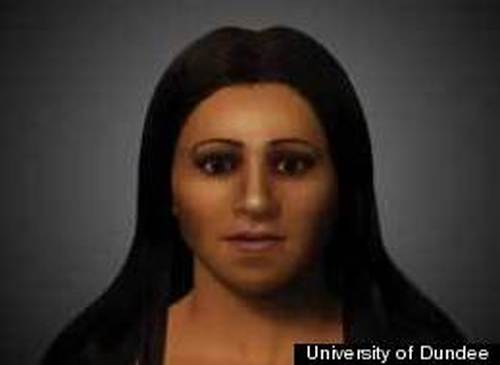
 RSS Feed
RSS Feed